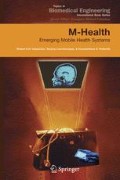Provisionof expertadvice and consultation, in real time, to rural or remote communities or even in mobile emergency (ambulance) cases has always been a demanding need. The vast expansion of mobile and wireless networks can greatly contribute towards the fulfilment of this need. However, medical image transmission remains the main drawback in such applications. Medical imagery (X-ray, ultrasound, mammograms, MRI, etc) is of high volume and has to be compressed in a lossless (bit preserving) manner in order to maintain its diagnostic value unaffected. For example, digital X-ray images of size 2k x 2k with 12 bits of pixel accuracy have become a commodity. Lossless compression of such an image will result in a reduction of its file size by 2 to 3 times (Adams and Kossentini, 2000), namely it will need approximately 20Mbits of storage instead of 50Mbits. But even such an image size is prohibited for a wireless or mobile network. Bluetooth performs below 1Mbps, which means that more than half a minute is needed for the transmission of the above example image. Existing mobile radio networks (GSM), which provide 9.6kbps connections, require over half an hour! The upcoming third generation (3G) cellular standard (UMTS, Universal Mobile Telecommunication System) will support transfer rates of up to 2Mbps, i.e. 144kbps in rural areas, 384kbps in hotspots, and 2Mbps in indoor scenarios. This is really a remarkable improvement in transfer rate in comparison to the second generation. However, the constraints related to the transmission over wireless networks are still present and stronger that those over connected networks. Apart from the lower transmission rate (bandwidth), there is also the higher channel bit error rate (BER). Recent studies report that the average packet loss rate in a wireless environment is 3.6% and it occurs in a bursty manner (Chang, 1998).
Access this chapter
Tax calculation will be finalised at checkout
Purchases are for personal use only
Preview
Unable to display preview. Download preview PDF.
Author information
Authors and Affiliations
Editor information
Editors and Affiliations
Rights and permissions
Copyright information
© 2006 Springer Science+Business Media, Inc.
About this chapter
Cite this chapter
Skodras, A.N. (2006). The Jpeg2000 Image Compression Standard in Mobile Health. In: Istepanian, R.S.H., Laxminarayan, S., Pattichis, C.S. (eds) M-Health. Topics in Biomedical Engineering. Springer, Boston, MA. https://doi.org/10.1007/0-387-26559-7_23
Download citation
DOI: https://doi.org/10.1007/0-387-26559-7_23
Publisher Name: Springer, Boston, MA
Print ISBN: 978-0-387-26558-2
Online ISBN: 978-0-387-26559-9
eBook Packages: EngineeringEngineering (R0)

